Holy Roman Empire
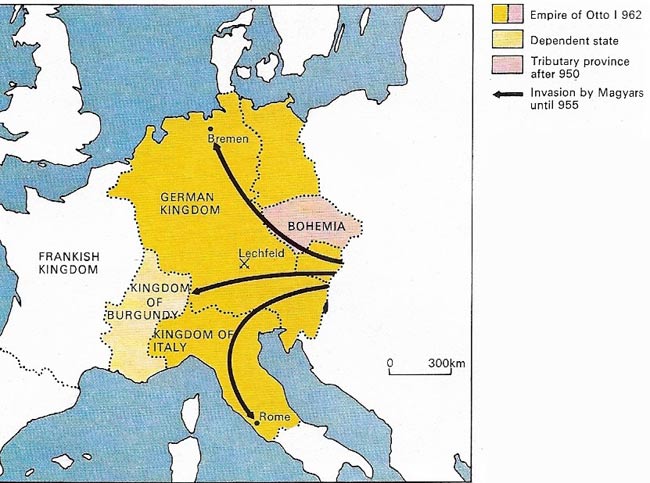
Figure 1. Expansion of the empire followed the crowning of a Saxon,Otto (912–973), as supreme leader of the five German tribal duchies – Saxony, Franconia, Bavaria, Swabia, and Lotharingia. His attempts to increase his power led to constant strife and to his papal coronation as emperor in 962. He became King of the Lombards in 951 and in 955 his victory over the Magyars at Lechfeld began the westward expansion of the empire.
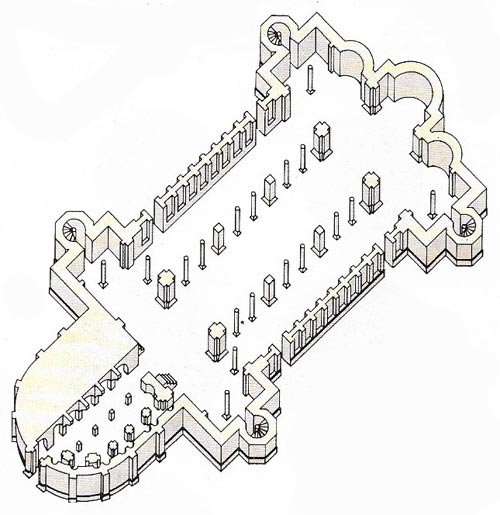
Figure 2. St Michael's at Hildesheim in Saxony, destroyed in World War II, was built in the early 11th century under the supervision of Bishop Bernward. It was later decorated with fine bronze ornaments and a magnificent flat, painted ceiling entirely covered with a representation of the Tree of Jesse. The plan of the church referred back both to early Christian and to Carolingian architecture but its internal rhythms were made subtler by two transepts and an apse.
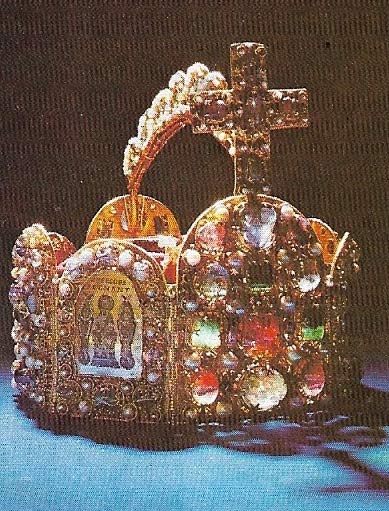
Figure 3. The imperial crown of Otto I was made for his papal investiture in 962. With the Christian cross in front, it is octagonal to represent the heavenly Jerusalem, with a semicircular strip above to represent world dominion. Two panels back and front each contain 12 stones representing the tribes of Israel. On the sides are biblical kinds. The crown symbolizes the functions of the wearer as temporal ruler and regent of Christ on Earth.
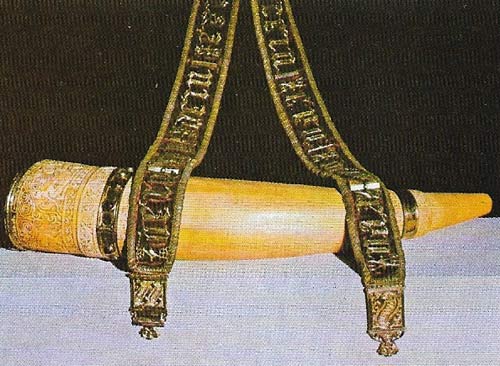
Figure 4. "Charlemagne's hunting horn", one of the treasures of the emperors, was probably made in the 11th century. It had nothing to do with Charlemagne, the revered first Holy Roman Emperor.
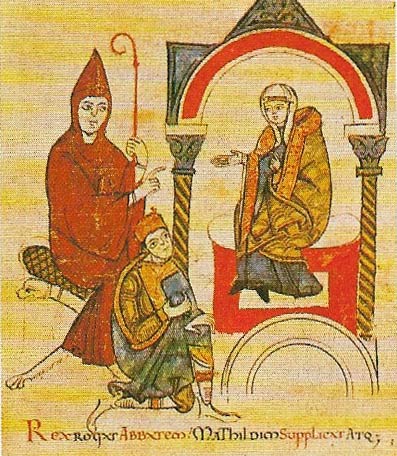
Figure 5. Canossa was the most humiliating episode in the history of the empire. Although the political results ultimately favored Henry IV, the spectacle of a penitent emperor begging for the intercession of Abbot Hugh of Cluny and Matilda of Tuscany in seeking the pope's pardon was one that injured German pride so much that even Bismarck's 19th-century conflict with the Papacy was based on a desire "never to go to Canossa again".
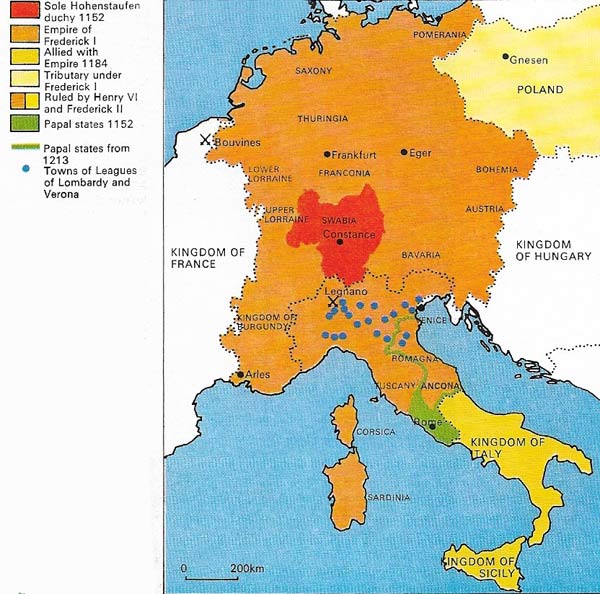
Figure 6. The territorial achievements of Frederick II (1194–1250), culminating in the Battle of Bovines (1214) at which he defeated his last remaining opponents, were the fulfilment of German imperial ambition. Frederick inherited his Sicilian kingdom and his southern ambitions from his father, and his lands completely surrounded the papal state He achieved the federation of Germanic countries and an administration imbued with Mediterranean culture that had been the dream of Otto III.
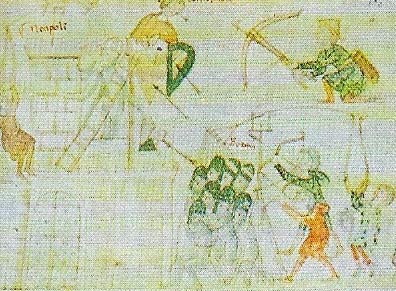
Figure 7. Peter of Eboli's illumination of the siege of Naples (1191) shows the army of Henry VI attempting to enforce his wife's claim to the southern Italian Norman kingdom. Despite his early successes,Naples, aided by the failure of the imperial naval allies and by plague in the besieging army, did not fall. Henry VI was crowned King of Sicily only in 1194.
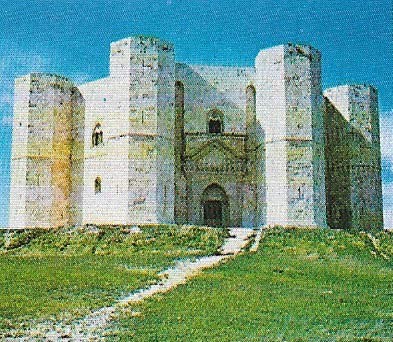
Figure 8. Castel del Monte, in southern Italy, is the finest of a chain of strategic fortifications designed in a novel and functional manner by Frederick II. He built up in Sicily and Apulia a system of defence and administration that was the most thorough and rational in Europe. As fortifications the castles protected Frederick from attack by the Papacy. As architecture, they were part of the flowering of the arts during Frederick's reign.
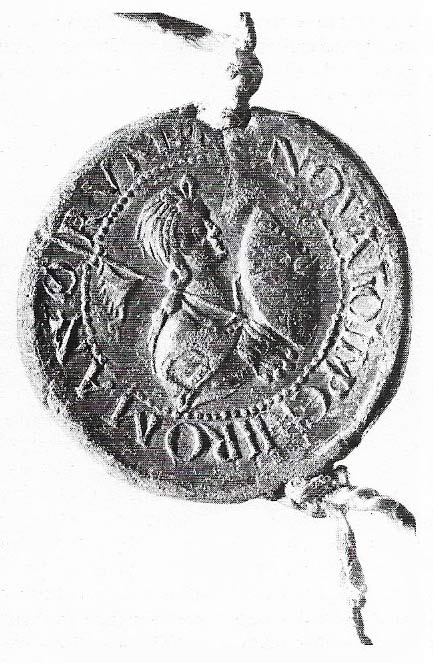
Figure 9. The imperial seal of Otto III (r. 980–1002) epitomized his ambition with the inscription Otto Imperator Augustus Renovatio Imperii Romanorum – Emperor Otto Augustus, the Renewal of the Empire of the Romans. The grandson of Otto I who founded the dynasty, Otto III was crowned aged three. His education was designed to produce an emperor who combined German strength and tradition with the new Arab, Greek, and Latin learning. To identify himself with Charlemagne, Otto opened his tomb at Aachen and stole a tooth, nail clippings, and clothes. On feast days his clothes were decorated with lions, eagles, and dragons and hung with bells.
The Holy Roman Empire sought to recreate a united Christian West such as had existed in theory during the last years of the Roman Empire. It was holy because it was based on the theory that the pope was supreme in ecclesiastical affairs, the emperor being the secular arm and the defender of the Church. It was Roman – despite the fact that the emperor was first a Frank and then a German – because Rome had for so long been the political center of the world.
Power struggle
The theory that the pope represented the spiritual authority of God on Earth and the emperor temporal authority was rarely a reality. In practice there were strong emperors and strong popes, and power fluctuated. From the mid-8th century the Papacy had looked increasingly to the Franks for protection against the Lombards, a dependence which culminated in 800 when Leo III crowned Charlemagne as emperor in Rome. Although the term was not used until the 12th century, the papal recognition of Charlemagne may be seen as marking the beginning of the Holy Roman Empire. The 10th century was dominated by the political success of the Ottonian emperors (962–1024), a Saxon royal house (Figures 1, 2 and 9). Otto the Great (912–973) was enthroned as king of the Germans at Aachen in 936 and crowned as roman Emperor in 962 (Figure 3).
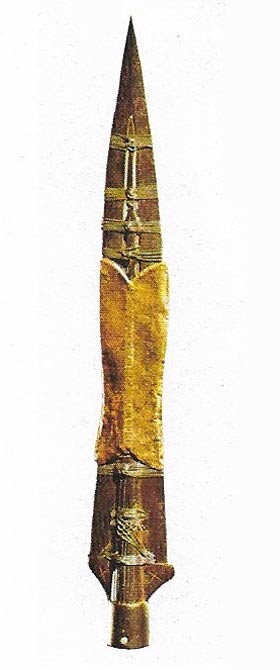 |
| The Holy Lance, which pierced the side of Christ, was politically the most important relic. In legend given by St Helena to Constantinople, it passed to Otto I, who bore it in battle. |
The Salian dynasty (1024–1125) saw the height of imperial power at a time when the Papacy was also powerful. The Salians were a Frankish family. Their empire under Conrad II (990–1039) included Germany, Burgundy, and Italy, and Conrad saw himself as ruler of the city of Rome.
The Investiture Contest
But a new reforming spirit within the Papacy made a major issue over the problems of investiture: who should appoint bishops, the pope or the secular ruler? The quarrel was essentially about the great wealth and power of the benefices at stake. No ruler could afford to relinquish control over appointments to the wealthiest positions in the land.
The so-called Investiture Contest culminated in a complete breakdown of imperial-papal relations which damaged the theoretical justification and the effective power of the Holy Roman Empire. The contest reached its height in the reign of Henry IV (1050–1106), who found that there was no possible compromise on this issue with Pope Gregory VII. Accordingly he called an imperial synod at Worms in 1076 and deposed Gregory. Gregory retaliated, deposed and excommunicated Henry, and began to build up a strong anti-imperial coalition. Henry, realizing the seriousness of his position, spent three days in a hair shirt at Canossa (Figure 5) awaiting papal forgiveness. Gregory then withdrew the excommunication but not the deposition. Henry had his revenge in 1084 when he marched on Rome and drove Gregory to a bitter death in exile. The Investiture Contest was finally solved by a compromise in which the emperor was allowed to invest a bishop with his scepter before consecration by the ecclesiastical authorities.
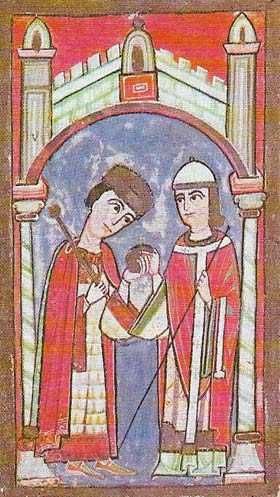 |
| The final humiliation of Henry IV, portrayed in this contemporary illustration,came in 1105 when he was forced to surrender his imperial regalia to his son, Henry V. Some of Henry IV's family had disagreed with his deposition of Gregory VII and installation of a new pope. Henry V joined them after becoming co-ruler in 1099 and soon overthrew the emperor. |
The religious and political pretensions of the empire reached their height under the Hohenstaufens (1138–1254). Frederick I "Barbarossa" (1123–1190) and Henry VI (1165–1197) saw themselves as the holy leaders of a God-given German Empire. Frederick I's power was based on an alliance with Henry the Lion of Saxony against the Normans and the Romans, and the opposition of the pope in 1159 led him to appoint his own pope, Victor IV. The Papacy thereafter backed the Lombard League — an association of north Italian cities that opposed Frederick and forced him to make peace after the Battle of Legano in 1176.
A dream shattered
Henry VI claimed all the lands of the Normans, especially Sicily (Figure 7), and dreamed of capturing Tunis and even Constantinople. He built the first imperial fleet, and defeated a hostile coalition between northern Germany and Britain when he made Richard Coeur de Lion his prisoner. His son Frederick II (1194–1250) had been brought up in Sicily and was more Mediterranean than German. Ambitious but sceptical, he was the mortal enemy of the Papacy and achieved the greatest expansion of imperial influence (Figure 6).
Sicily under the Hohenstaufens was culturally a mixture of Italian, Arabic, Greek, Norman and Germanic influences, and was part of a larger culture that spread from Mesopotamia through Moorish Spain. Frederick saw politics as an art, government as a bureaucratic skill. He patronized the arts and sciences and founded the university of Naples to rival Bologna. He saw the empire as a German federation and in 1231 was prepared to recognize the territorial claims of the princes. In 1235, he published the Landfrieden of Mainz, the first German law written in German which defined the empire as a league of princes within a monarchic framework. His negotiations with the Muslims scandalized the Christian West but enabled him to be crowned at Jerusalem without fighting a crusade. At the Council of Lyons in 1245 he was condemned and deposed. When, on his death, the Papacy broke the power of his family, the future of the international empire of his dreams was shattered. The empire survived, but as a spectral organization, until Napoleon Bonaparte's arrival in Germany in 1806.
